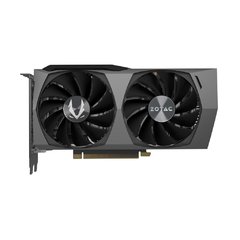GIGABYTE Radeon™ RX 7600 GAMING OC 8G - GV-R76GAMING OC-8GD
Graphics Engine: AMD Radeon RX 7600 BUS: PCI Express 4.0 Memory size: 8 GB GB Memory type: GDDR6 Stream processors: 2048
All NVIDIA Ampere, NVIDIA Grace Hopper, NVIDIA Ada Lovelace and NVIDIA Blackwell GPU architectures are subject to a non-cancellable, non-returnable (NCNR) period of 52 weeks. Additionally, the product is subject to sanctions for certain countries and the end customer must be documented.
| Product code | 214.166564 |
|---|---|
| Part number | GV-R76GAMING OC-8GD |
| EAN | 4719331313425 |
| Manufacturer | GIGABYTE |
| Availability |
In stock 1 pc
Stock allocation and delivery options
Rožnov In stock
Transport company across Europe Monday 26. 5. at the latest Tuesday 27. 5. |
| Supplier availability | In stock 104 pc |
| Warranty | 36 months |
| Weight | 1.35 kg |
| The price includes all legal fees | |
Detailed information
AMD Desktop GPU
With its exceptional hardware and unwavering software support, AMD has become the go-to choice for countless enthusiasts and professionals. From seamless experiences in demanding applications like Unreal Engine to high-speed rendering, AMD delivers consistently impressive performance. Leveraging the RDNA 3 architecture with RT cores, these cards also enable dedicated RayTracing, significantly boosting the graphical capabilities of their products. Topping it all off is the AMD Noise Suppression feature, ensuring a remarkably quiet work environment.
Floating point
Using the FLOPS unit, we can estimate the raw performance of graphics cards today. It indicates how many operations per second a graphics card can perform, allowing us to compare them against each other. However, these values can vary depending on the bit size of the floating-point (FP) representation. The larger the bit size, the more accurate the calculations, but also the fewer of them there are. Since gaming PCs need precise values for smooth operation, they mainly use 32-bit FP (or FP32). On the other hand, Deep Learning does not necessarily require such precise calculations, and therefore AI graphics cards use FP8. This drastically reduces the accuracy, but on the other hand increases the number of calculations.
Graphics memory
VRAM, these days primarily of GDDR type, is a synchronous memory, similar to standard RAM. However, in the case of graphic memory, memory chips with faster throughput and multiple data transfer rates are concerned. The result is a much faster buffering of data that the graphics card or coprocessor calculates and passes to the processor.
Active
The active type of cooling is widespread mainly due to the reliable method of lowering temperatures. It is cooling by air flow, most often consisting of one or more fans and its goal is to help create a vacuum inside the case thereby significantly improving the air flow that takes heat away from the graphics card out of the case. Active cooling of graphics cards is divided into axial cooling, common for traditional gaming graphics cards and radial cooling, which uses longitudinal airflow. This type of cooling is used, for example, by TURBO version of graphics cards.
PCI Express
PCI Express is an interface that usually takes the form of an expansion slot to ensure the modularity of the entire system, whether it is GPU, network cards, controllers, M.2 drives or other expansion cards. It is true that the newer the generation and wider the interface, the higher the performance and throughput. Most modern graphics cards use 16 lanes to connect with the processor. Currently, the most up-to-date generation is PCI Express generation 6.0 with a speed of 7.5 GB/s per lane.














